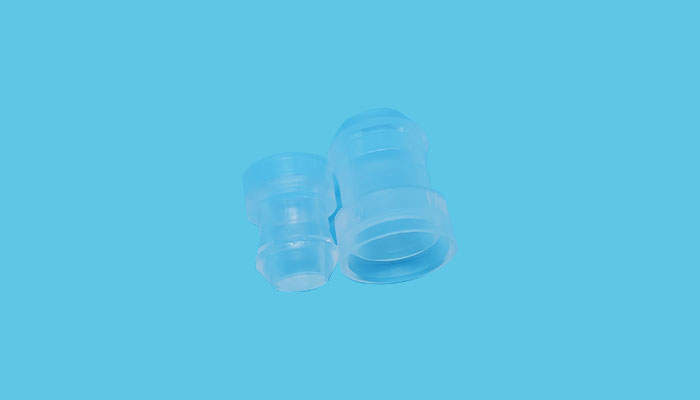In the previous article, we briefly talked about the excellent performance of PTFE, today we will specifically talk about the physical properties of PTFE, in order to give readers a better understanding of what are the applications of PTFE.

1. PTFE simple overview and physical properties
Polytetrafluoroethylene (PTFE) is a synthetic fluoropolymer of tetrafluoroethylene and is a PFAS that has numerous applications. The commonly known brand name of PTFE-based composition is Teflon by Chemours, a spin-off from DuPont, which originally discovered the compound in 1938.
The physical properties of PTFE are shown in the table below:
Material Name | PTFE |
Density (g/cm3) | 2.12~2.17 |
Water absorption | <0.05% |
Hardness - Shore D | 64 |
Elongation at break | 300% |
Max. service temperature | 288℃(About 550℉) |
Friction coefficient | 0.08 |
dielectric constant at 1MHz | 2.1 |
From the above table, we can easily find that PTFE has extremely outstanding high temperature resistance, with a long-term working temperature of up to 288°C (about 550°F), which is more outstanding than PFA, and a wider working temperature range than PFA.
PTFE has a chemical corrosion resistance (is one of the world's better materials for corrosion resistance, in addition to molten metal sodium and liquid fluorine, resistant to all other chemicals), a wide range of operating temperatures, a small coefficient of friction, a small dielectric constant, non-adhesive, extremely strong biological adaptability and other unique properties.
2. Traditional use of PTFE
At present, the downstream applications of PTFE are mainly concentrated in the chemical and electronics industries. Polytetrafluoroethylene (PTFE) is the most widely used fluoropolymer, at the same time, it is the downstream extension of R22, PTFE relies on a special molecular structure in the corrosion resistance, self-lubricating, non-stick and biological inertness and other aspects of the performance of the performance of a wide range of applications in many fields. 2022, China's downstream demand for PTFE is mainly concentrated in the chemical industry, electrical and electronic appliances, machinery, anti-adhesive coatings in four major areas. Among them, chemical industry with 28%, electronic and electrical appliances industry with 26% share to become the most important application areas of PTFE, some of the remaining applications are distributed in the automotive transportation, kitchenware, medical and construction and other fields.
3. PTFE's new application outlook
In the future, it is estimated that there are two kinds of new uses of PTFE: 5G communication and dry battery:
①5G communication
In order to meet the needs of low latency, high speed, large traffic, multi-connections, 5G technology is moving to higher frequency bands. 5G communication high frequency, the dielectric loss coefficient of the substrate needs to be 2.4 or less, dielectric constant needs to be 0.0006 or less, if the substrate's dielectric properties are weaker than the above standards, the entire 5G network will appear higher transmission loss, while the signal transmission speed will also be a significant drop, weakening the 5G compared to 4G, and the 5G will not be able to meet the needs of the 5G network. Weaken the advantages of 5G compared to 4G. Therefore, PTFE is the dielectric material of choice for 5G base stations and smartphones.
②Dry Electrode
At present, dry electrode technology has been widely used in supercapacitors, from supercapacitors to lithium battery technology migration is underway, but there are certain process thresholds, such as the need to solve the problem of solving the collector and the active material surface bonding problems, solid-solid phase powder material interface impedance.
solid-phase powder material interface impedance problem and the subsequent provision of ion exchange volume problems. If the dry electrode technology in the field of lithium batteries successfully landed, will replace the traditional electrode production process, to develop new market demand for PTFE.
4. Disadvantages of PTFE
Although PTFE has many advantages, it still has some disadvantages, mainly the following:
① Limited by raw materials and costs;
② reaction by-products of high processing difficulty: the reaction process produces HCl and other by-products, high processing difficulty;
③ Difficulty in processing and molding steps: higher crystallinity makes PTFE difficult to be molded by extrusion processing such as PP and PE.
④ equipment and device requirements are high.
Summarize: PTFE is currently the most used fluoroplastics, occupying about half of the market share, in the future there are still new growth points.
If you have any other questions, please feel free to contact us, we will try our best to answer for you.
Fluoroplastics Series:
Fluoroplastics Series (1) - Yize Mould had successfully design and manufacture PFA tube fittings
Fluoroplastics Series (2) - What are the Applications of PFA?
Fluoroplastics Series (3) - What are the similarities and differences between PFA and PTFE?
Fluoroplastics Series (4) - What are the applications of PTFE?
Fluoroplastics Series (5) - What is PVDF?
Fluoroplastics Series (6)--New Applications of PVDF
Fluoroplastics Series (7) - FEP performance